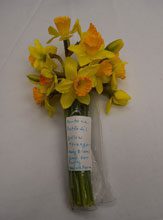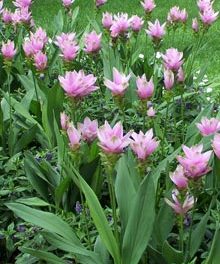 I’m often asked, “When is winter here?” There really is and isn’t a good answer. The calendar and the weatherman don’t always sing from the same songbook.
I’m often asked, “When is winter here?” There really is and isn’t a good answer. The calendar and the weatherman don’t always sing from the same songbook.
Official winter is late December to late March. That lands spring at the end of April until late June. Looking out into the February garden in the lower South we have daffodils, yellow jessamine, saucer magnolias, tea olive, and so many other flowering shrubs and trees blooming in our gardens.
One of the old favorites blooming by my front steps is the Winter Daphne, Daphne odora,whose sweet lemon fragrance welcomes me and visitors. Plants respond to cues from the climate, day length, soil temperature, and/or moisture. They are programmed to grow, set buds, and flower according to at least one of these cues. I had a call this week from a gentleman who wanted to know if he should pick his lemons. He said the tree was loaded with fruit and starting to bud. My advice was that he should pick the lemons before it freezes. I didn’t one year and felt a little annoyed when I saw frozen lemons hanging on the tree. The tree was fine, but the lemons were wasted.
Beaufort is at a latitude of 32.4 degrees North of the Equator. Our average rainfall is about 52”/year, but a lot of that usually falls in the winter. The proximity to the ocean, bay, or tidal creeks helps to moderate temperatures. Some plants will need protection from frost or freezing when temperatures dip below 30°F. It’s not Spring yet. Plants also offer protection and food to migrating birds. Native plants like yaupon holly, wax myrtle, and beautyberry are low maintenance and support wildlife. Having food, cover and a source of water are the best ways to provide late winter entertainment as your woodpeckers, wrens, chickadees, cardinals, and other songbirds flock to your landscape beds. There may be an unexpected bonus of pest control as they feed their young insects and juicy caterpillars.
This is the season to prune overgrown shrubs and shape young trees, and it’s still a great time to plant. Test the soil to check the pH; add lime in the recommended amount. It takes several months for lime to become activated in the soil. Work organic matter like compost into planting holes, but don’t plant trees or shrubs too low. That is a sure recipe for suffocation of roots and poor establishment.
Prune summer flowering shrubs; wait to prune azaleas and camellias until after they bloom. A few of the hydrangeas bloom on new wood, but the mopheads set their flower buds in the late summer and shouldn’t be pruned until after blooming. The oakleaf and some of the newer varieties can be pruned in late winter or spring to shape and remove dead wood. Pruning all roses except the climbers is typically done around mid-February. Pruning cuts should be made on a slant so that water doesn’t sit on the wounded stems. This is an excellent time to clean and sharpen the tools that will be used in pruning, planting, and maintenance.
Many vegetables enjoy the cool season and should be planted out in the garden now. Greens, turnips, sweet peas, carrots, and beets are great to get the growing season started. It is also time to start tender plants inside like tomatoes, peppers, and eggplant. It generally takes about 6 weeks for the plants to grow so they can be set out in mid-March.
There are also lots of flowers that stretch from season to season and give great winter and early spring color in beds and containers. Try mixing in some edible flowers like nasturtiums and pansies with cabbage, kale, and parsley.
Happy Winter/Spring.
Above: The Fortune daffodil is an early bloomer and has a nice fragrance.







